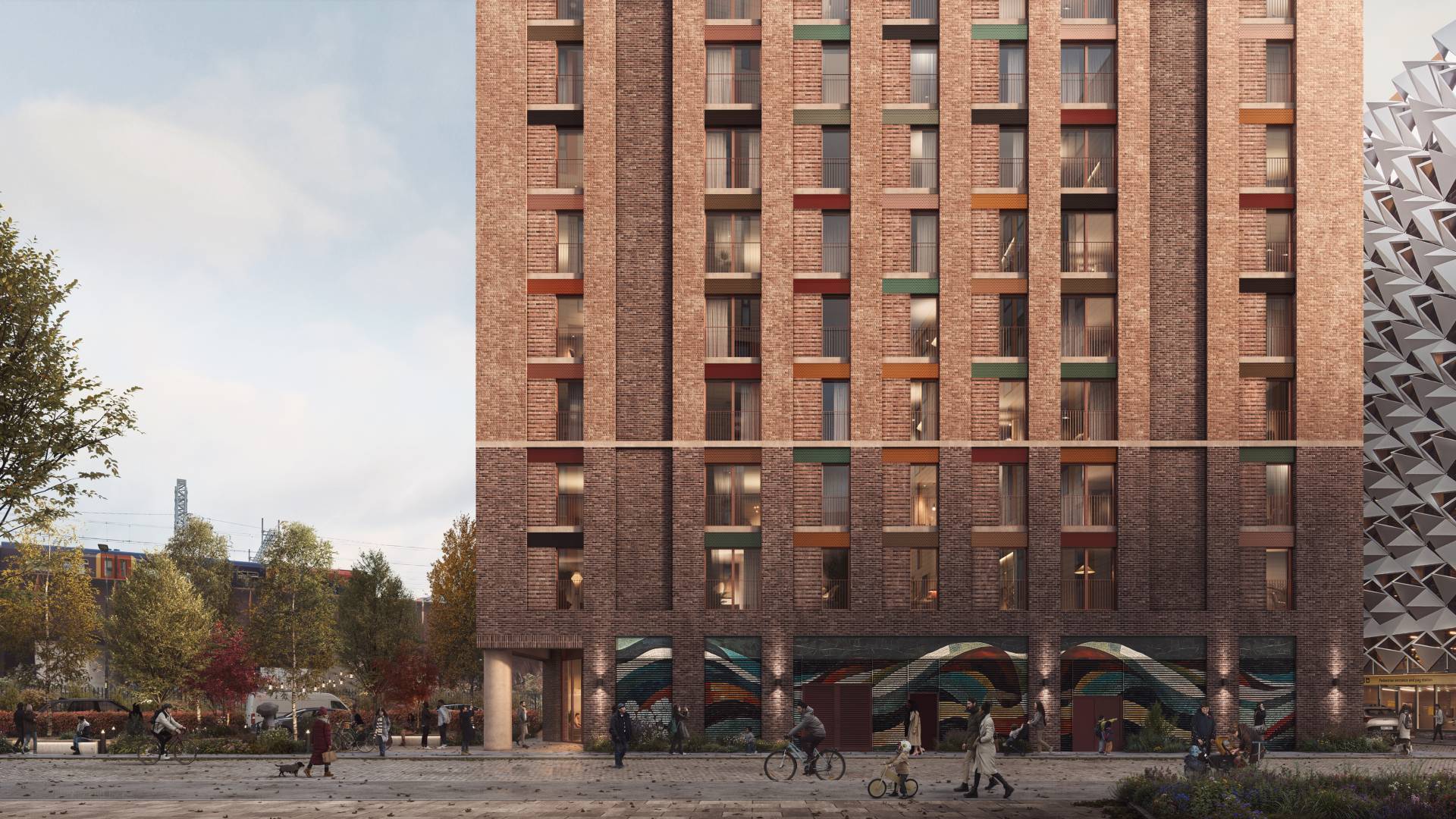Manchester City Council is consulting on a new Local Plan until 17 November 2025. Oliver Corbett, Associate Director and one of DPP’s North West leads, provides his thoughts on the emerging policies and the significant changes they could bring to the city in the coming years.
If you or your clients would like to respond to the Local Plan consultation, please get in touch with Oliver at oliver.corbett@dppukltd.com or Kayleigh Dixon at kayleigh.dixon@dppukltd.com.
Manchester is a city moving from strength to strength. Economic growth in the city continues to outpace nearly every other city in the UK, at a rate of 2.1% per annum against a national average of 1.6%, [1] and the city’s population increased by 9.7% between 2011 and 2021[2]. The pace of change means that Manchester City Council’s planning department has to be agile in responding to new and increasing demands for housing, employment opportunities and more; this in turn means allocating additional land for development, and ensuring that planning policies are able to deliver this continued growth.
The draft Local Plan is an ambitious and wide-reaching overhaul of the city’s planning policies. It is proposed to entirely replace the existing 2012 Core Strategy and more dated Unitary Development Plan policies, and would sit alongside the 2024 Greater Manchester ‘Places for Everyone’ strategic development plan.
The level of ambition and change proposed in the draft Local Plan is considerable, and DPP have undertaken an overarching review of some of the key thematic changes emerging from the draft policies.
[1]EY UK Regional Economic Forecast 2025, source: https://www.ey.com/content/dam/ey-unified-site/ey-com/en-uk/newsroom/2025/03/ey-uk-regional-economic-forecast-03-2025.pdf
[2] Census 2021, https://www.ons.gov.uk/visualisations/censusareachanges/E08000003/
Expansion of the City Centre Boundary
The city centre is proposed to extend significantly beyond the Inner Ring Road to the north-east and south-west, to include new areas for growth at Strangeways and Great Ducie Street, NOMA, Collyhurst, Ancoats and New Islington, Mayfield and the Oxford Road Corridor.

This expansion also leads the way for considerable expansion within the city centre, with Policy SGL 2 requiring 40,000 new homes at a density of at least 200 dwellings per hectare to be delivered within the new city centre boundary by 2040.
A New Mandate for Affordable Housing Provision
Draft Policy H 2 ‘Affordable Housing’ reduces the affordable housing threshold from 15 dwellings to 10, bringing smaller sites and developments into the draft policy’s remit. It also quantifies the city’s affordable housing need (1,142 dwellings per year, to be exact) and introduces an ‘expectation’ for all major developments to provide 30% affordable housing within major developments, of which 80% should be affordable rent and 20% for affordable home ownership. Further, social rent is expected to make up 70% of total affordable housing provision.
This is a measurable increase from the current 20% affordable housing requirement (Core Strategy Policy H8) and a significant move away from the current requirement of 5% social/affordable rent, 15% intermediate housing. Importantly, the draft policy retains a viability mechanism by which the affordable housing provision can be reduced in order to make schemes viable, but adds a mandatory review trigger such that changes in viability are monitored throughout the development process.
A Changing Stance on Purpose Built Student Accommodation (PBSA)
Manchester has not seen the explosive growth in PBSA that other core cities, like Leeds, have experienced in the past 15 years. This is in part due to restrictions under Core Strategy Policy H12, which requires, among other matters, a demonstrable need for development to be clearly demonstrated or to have entered a formal agreement with one of the city’s universities. The lack of supply has resulted in strong demand for bedspaces, with recent analysis by PBSA News[1] showing that there could be up to 2.5 students per 1 bedspace across the city.
Draft Policy H 5 introduces further and stronger controls on PBSA development; the headline new requirement being a requirement that 20% of bedspaces be offered at an affordable rent of 80% market rate. The city follows in the footsteps of relatively few LPAs in introducing such a policy (York and London being other examples). Others include a requirement for pastoral care programmes and a requirement to demonstrate deliverability of schemes. Also of note is that the locational requirement for new developments to be situated in “close proximity” to the universities has been retained.
[1] Manchester PBSA sector spotlight – ‘a battle for beds’
Parking Thresholds Significantly Reduced
Draft Policy T 2 brings a huge change in parking policy in the city centre in particular. Where individual developments were previously assessed on a case-by-case basis under adopted Policy T2, the replacement policy now restricts city centre parking to serving those with disabilities, emergency vehicles and for business service vehicles only. This effectively creates a de facto ban on new parking spaces within the city centre without strong justification to the contrary.
Outside the city centre changes are less radical, but there has still been a move away from loosely defined ‘maximum’ parking standards to a specific requirement that all developments seek to minimise vehicle parking provision, and to consider consolidation of parking at the edge of major developments in some more specific design guidance.
Net Zero Carbon Becomes the Norm
The draft Plan specifically includes net-zero policies under the ‘ZC’ header – this represents a move beyond the typical energy efficiency/sustainability policies of the previous Core Strategy.
Draft Policy ZC 1 requires all new-build residential development, and non-residential development over 1,000sqm, to meet the Manchester Net Zero Carbon Building Standard. It also introduces a requirement for refurbishments and conversions to meet BREEAM Domestic Refurbishment ‘Excellent’ rating, and requires all major developments to be supported by a Whole Life Carbon Assessment.
Draft Policy ZC 2 requires developments to achieve specific space heating and energy demand requirements through the ‘fabric first’ design approach, and for operational energy use to be modelled at the application stage (for example using Passivhaus or Design for Performance modelling, among others).
These policies result in a significant step beyond Building Regulations Part L compliance, and in particular the Whole Life Carbon Assessment could represent a significant challenge to the viability of proposals requiring demolition – as the city continues to develop vacant brownfield plots, there is a risk that this could limit the renewal of built-up areas in the future.
Urban Green Factor (UGF) Looms…
UGF is a policy matter which DPP are very familiar with, being required by the Greater London Authority for all major developments in the capital. Very few cities outside of London have introduced a UGF policy (Southampton being a notable example) and this could bring about significant changes to developments in the city.
Policy EN 6 brings a UGF policy to Manchester for the first time, requiring minor and major applications (except householder and custom/self builds) to incorporate urban greening provisions; for major applications more stringent requirements are applicable, including a requirement to meet a minimum UGF factor of 0.4 for residential and PBSA development, or 0.3 for all other land uses.
Green (and Blue) Infrastructure
Where current Core Strategy Policy EN9 only requires consideration of Green Infrastructure, Draft Policy EN 1 brings ‘blue’ infrastructure into the mix. Developments would need to design-in and consider both green and blue infrastructure – blue roofs and urban wetlands might need to feature in larger developments to comply with the emerging requirements.
DPP’s Conclusion
There are many more policies within the draft Local Plan that warrant discussion; the allocation of Victoria North for the delivery of 15,000 new homes by 2040 for example, which is a significant urban extension proposal also supported by the Government’s New Towns Taskforce, having been identified as a potential New Town development.
The draft Local Plan is a bold and ambitious document, still encouraging growth at scale but introducing some fairly tough policy requirements for developers to comply with. In a wider context, the draft Plan positions Manchester as a policy innovator among the UK’s core cities, particularly so amongst cities in the North – the adoption of an Urban Greening Factor policy and requirement for Whole Life Carbon Assessments are particularly novel interventions outside of London.
Ultimately, the increased emphasis on affordable housing provision, zero carbon interventions and green and blue infrastructure presents both opportunities and challenges for the city. Balancing the ambition of these policies with the realities of the development industry, at a particularly challenging time considering Building Safety Act implications and the wider economic picture, will be key to ensuring that the draft policies are successful. We certainly hope the draft Local Plan can provide a positive influence on placemaking within the city over the coming decades.
Oliver Corbett – Associate Director, DPP




